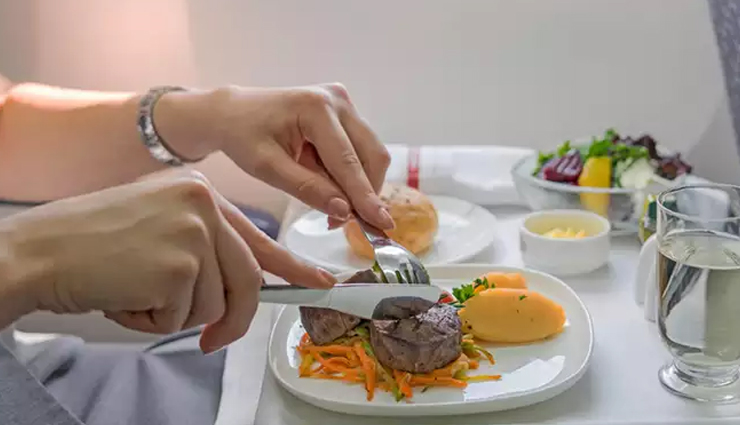5 Risky Foods You Need To Avoid While Traveling
By: Kratika Mon, 14 Feb 2022 10:50:47

For many of us, eating is one of the best parts of traveling. But this thing we do three (or more) times a day comes with the inherent risk of illness, especially in places where food and water is more likely to be contaminated with bacteria, parasites, or viruses. So we’ve compiled these tips to help you outsmart Montezuma, keep Delhi away from your belly, and fend off the much worse things that can hitchhike their way into your system during mealtimes.

# Tap Water 101
Contaminated water is one of the world's leading causes of illness. The pathogens that cause travelers' diarrhea (TD), rotavirus, cholera, and a host of other diseases tend to infect humans through water (and food) contaminated with human or animal feces. This sort of contamination is particularly common in regions without adequate water sanitation and hygienic water storage. As a traveler, drinking water shouldn't be a "when in Rome" situation, since locals may be able to stomach pathogens that would knock you out because your immune system is totally unprepared for them.

# The Risks of Ice
Since the pathogens that make tap water dangerous aren't killed by freezing, ice carries the same risks as tap water. In places with unsafe water, ice should be consumed only if it's made from bottled, boiled, or treated water. Realistically, though, when you're out and about, it's hard to know where the ice in your drink comes from.

# Shoo Flies
When flies land on food, they contaminate it in a variety of unsavory ways: First, their legs carry traces of everything else they've recently landed on, often including feces and rotting trash. They also regurgitate previously consumed food onto whatever new delight they've landed on, all while leaving their own fecal matter behind. That's not only gross, it's also a way that pathogens move from things you would never dream of putting in your mouth to the food you eat.

# Hand-Washing Matters
Hand-washing is one of the most effective ways to prevent the spread of many diseases, but in many places itâs still not a standard practice in food service. More and more countries have hand-hygiene campaigns, but widespread adoption of new habits takes time, especially in places where safe water is scarce.

# Like It Hot
Freshly prepared, thoroughly cooked, piping-hot foods are not pathogen friendly, and that's just the kind of antisocial behavior you want from your meals. Foodborne bacteria multiply rapidly in cold foods not kept below 40 degrees and cooked foods not kept above 140 degrees, so if the food you're eating is supposed to be hot, make sure it actually is before you dig in.





